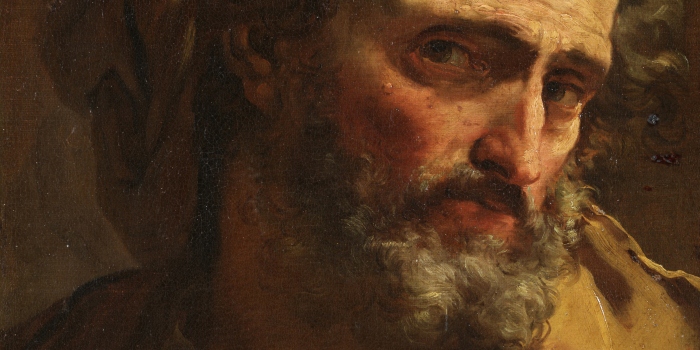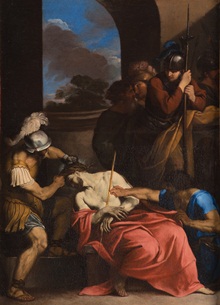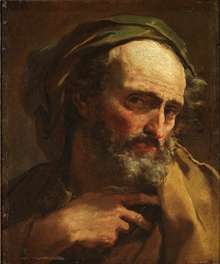
Early and high baroque italian painting
Beginning in the Renaissance, Saint Sebastian was depicted in Italian painting as a young man with a well-proportioned body and gentle countenance. In Federico Barocci (ca. 1535–1612)’s painting—this extreme rarity is a masterfully painted «modello» for an altar painting created ca. 1590/95 in the Cathedral of Genoa—the sentimental aura is exaggerated to accord with counter-reformation efforts.
According to legend, Sebastian, an officer in the imperial Roman army, was sentenced to death for publicly proclaiming his faith. After surviving the archer’s arrow, he continued to staunchly confess his belief in Christianity, and was therefore slain with a club. He is thus considered the patron saint providing protection against plague and pest, and patron saint of the dying and of numerous professions including those associated with the art of warfare.
In the «modello,» which is completed to perfection, the artist aimed to describe the facial expression in full detail. The depicted saint’s affects are visible in his physiognomy. His slightly opened mouth alludes to the suffering of the martyr, while the upwardly turned eyes evoke a vision of sympathy with the crucified savior. This is Saint Sebastian: a youthful, handsome man and likewise a role model of virtuousness and undying faith.
Barocci is the most important Italian artist of the second half of the sixteenth century. His significance within international Baroque painting is immense, as already evident by his formative influence on the Flemish painter Peter Paul Rubens.
The Kunstmuseum St.Gallen has an outstanding example of Roman Baroque painting with the Dornenkrönung Christi, a work painted by Carlo Maratta (1625–1713) in ca. 1650. The dramatization of the Passion as described in the gospels in a counterreformation sense, aims entirely at stirring the beholder’s empathy: the devout should comprehend the sacrifice of the savior emotionally, nearly physically. The precisely calculated lightness-darkness of the scene, the coloring, and clever composition—observe simply how the soldier, fitted with armored gloves literally tears the head of Christ from the center of the image—all point to Maratta’s intellectual background. As director of the Accademia di San Luca he was at the center of topical art discourse, and maintained a congenial dialogue with Giovanni Pietro Bellori, the influential theorist who saw the classicist ideal realized most purely in the Baroque painting by Carracci, Poussin, and Maratta.
Kopf eines bärtigen Mannes by Gaetano Gandolfi (1734–1802) provides the collection’s Baroque work an important emphasis in the eighteenth century. Apprehended as a half-length portrait, the subject, with his wildly curly hair and beard, moves up close to beholders and scrutinizes them with a skeptical, distanced gaze. A character study that expresses both power and mystery, staged in dynamic chiaroscuro. The man’s striking gestures and facial expression—the turn of the head to the left, the gaze from shadowed eyes, lips pressed firmly together, and right arm held before the chest, can clearly be seen in connection with the art-theoretical concept of affects (affetti): a central demand made of artists beginning in the Renaissance was to vividly depict human affects and feelings in an image through the body’s movements and gestures.
The Gandolfi brothers were Bologna’s leading masters in the second half of the eighteenth century. In addition to frescoes and altars, they created numerous religious and mythological panel paintings, genre frescoes, and portraits. This painting was first recognized as one of Gandolfi’s characteristic works from the 1770s after its recent rediscovery. An entire series of head studies that he created has been handed down, although only a few achieve the painterly quality and strength of expression present in Kopf eines bärtigen Mannes. The immediacy, which speaks from the brilliantly spontaneous painting, but also from the disturbing eye contact, leads us to assume that the work was created directly in front of the model.



